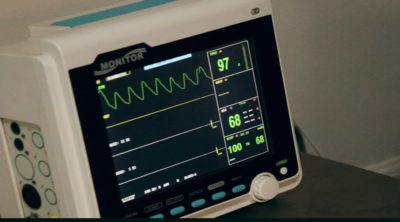
An inflammation of one or more bursae (small sacks) of synovial fluid located in the joints of the body is called Bursitis. Bursae are located where the internal functionaries like muscles and tendons slide across the bone. It mostly affects the joints of the elbow, hip, and the knee.
Joints are a very important part of the human body. They have small sacks (bursae) containing synovial fluid, which ensures that an individual can move that particular joint freely. Normally, if the bursae are healthy, they create a smooth, frictionless, functional gliding process. But, when there is an inflammation of this sack, it is called Bursitis, in medical terms.
Causes
Bursitis is primarily caused by excessive and repetitive pressure on a specific joint. It usually affects the elbows and the knees. Shoulder Bursitis can also be caused by an overuse of the shoulder joints and allied muscles. A major traumatic injury can also lead to this condition. Inflammation of the bursa irritates, because it does not fit between the bone and the functionary muscle or tendon. Continuous impact on a particular area or a sudden, serious injury can cause Bursitis. However, age is also a significant factor for determining this condition. It is an important factor because, the constant wear and tear of the tendons over the years reduces the elasticity of the joints. Hence, they cannot take much stress and become prone to tearing.
Some of the activities involving the risk of Bursitis are gardening, carpentry, shoveling, painting, scrubbing and even playing tennis, golf, skiing, throwing, and pitching. It can also be caused by poor stretching or conditioning before an exercise routine. It can also result from an incorrect posture at work or home. Conditions like, rheumatoid arthritis, thyroid disorders, or infections could also lead to this condition. The body parts affected are, the base of the thumb, elbow, shoulder, hip, knee, and Achilles tendon. The most common examples of this condition are, Prepatellar Bursitis, “housemaid’s knee”, Infrapatellar Bursitis, “clergyman’s knee”, Trochanteric Bursitis, Olecranon Bursitis, and Subacromial Bursitis.
Symptoms
The most common symptom of Bursitis is pain in the joints. It is also experienced around the bursa. However, it may build up gradually or could suddenly and severely occur in case of calcium deposits in the bones. Another symptom could be a ‘frozen shoulder’, wherein, stiffness and loss of motion is experienced in the shoulder. The symptoms can be anything from stiffness to joint pain, or it may be a burning pain in the area surrounding the joint, around the swollen bursa.
Treatment
The treatment for the above condition depends on whether or not, it involves any infection. Bursitis, which does not involve infection or which is aseptic, can be treated by ice compresses, rest, anti-inflammatory drugs, and pain killers. It might also require aspiration of the bursa fluid, which is the process of sucking the liquid in the bursa through a syringe, under sterile conditions.
Among other methods of treatment, non-infectious Bursitis can be treated by a cortisone injection in the swollen bursa. Infectious Bursitis requires a rigorous treatment. Also called septic Bursitis, this condition may require intravenous antibiotic therapy. Steroids and corticosteroids are generally used to reduce the pain and inflammation. Steroids in fact, can be administered, or rather injected at the affected spot for instant relief.
Another method for treating Bursitis is physiotherapy, which is often used for frozen shoulder. The last resort could be surgery, in case of no response to other methods of treatment. One should immediately consult a doctor if there is high fever, general illness or multiple points of pain, swelling, redness, and inability to move that particular part of the body. These could be the signs of other impending problems.
Go slow in case of an activity, which aggravates the pain in the concerned joint. By taking proper care of the body parts, above condition can definitely be avoided.


